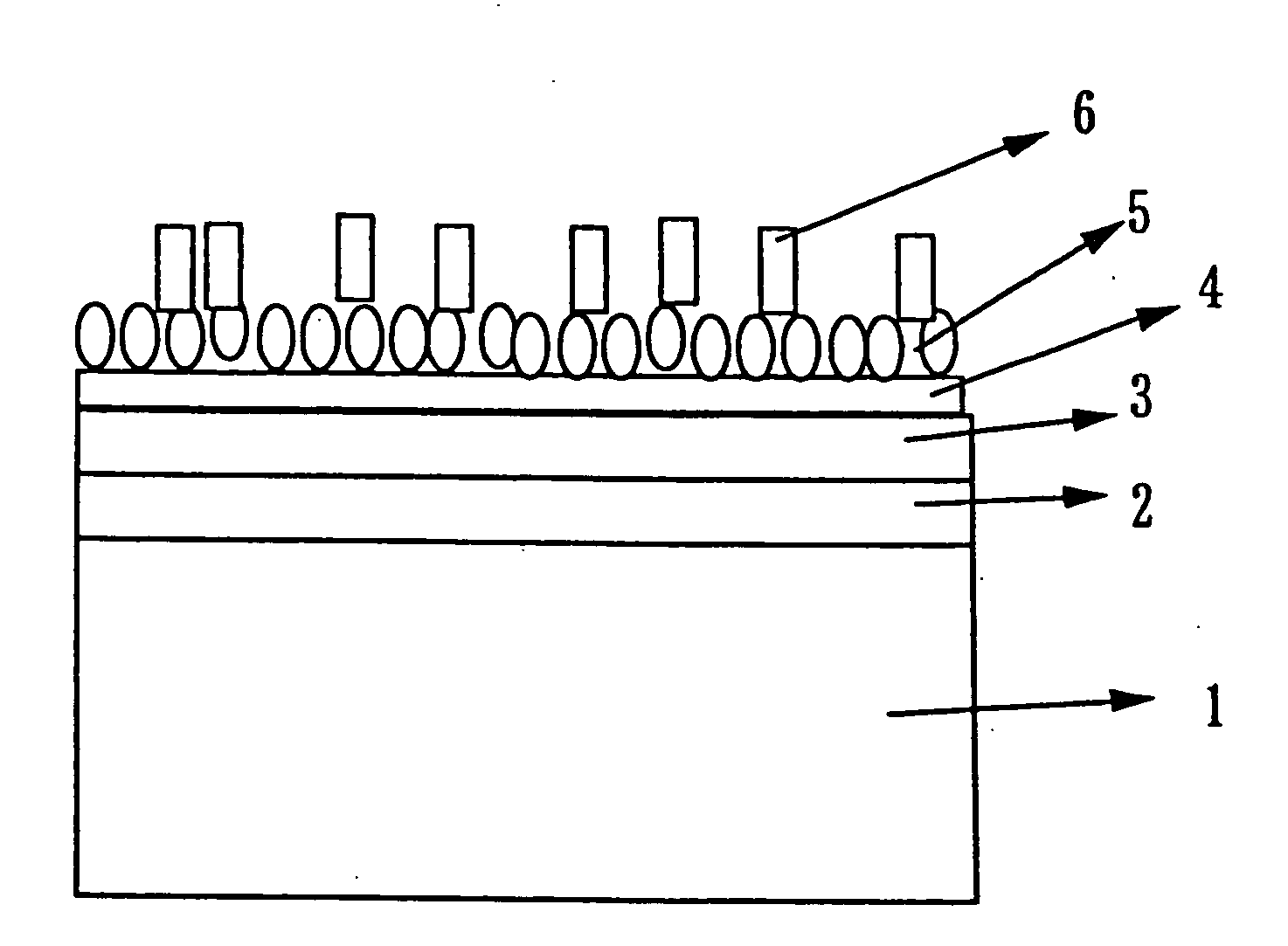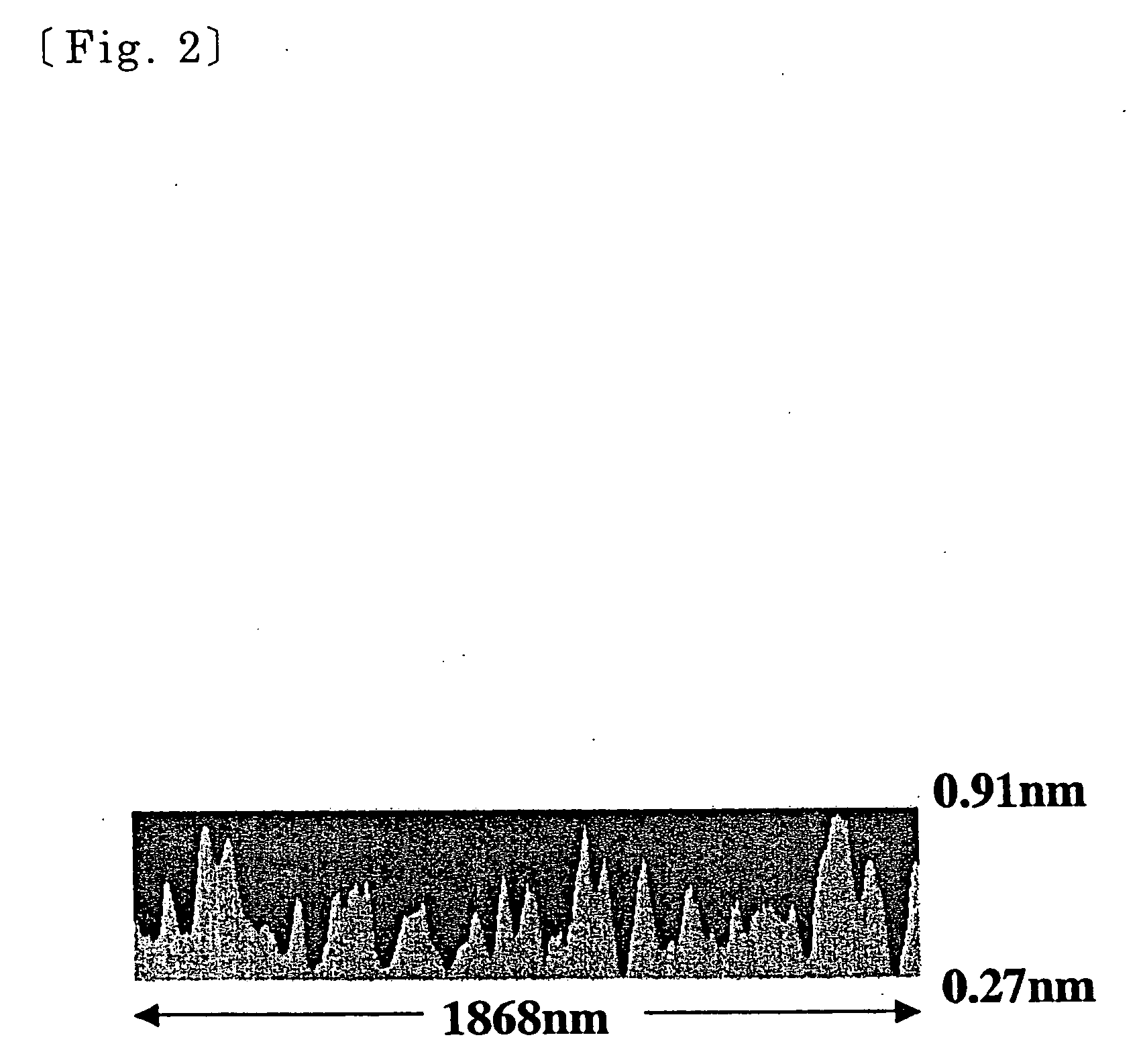Biochip Production Method, Biochip, Biochip Analysis Apparatus, and Biochip Analysis Method
a biochip and analysis method technology, applied in the field of biochips, can solve the problems of difficult methods using a large number of protein chips, difficult to examine the molecular structure and the like of proteins with the methods, and take a lot of time and effort to carry out all the steps, so as to reduce the number of steps and reduce the size of the apparatus
- Summary
- Abstract
- Description
- Claims
- Application Information
AI Technical Summary
Benefits of technology
Problems solved by technology
Method used
Image
Examples
embodiment 1
[0085]One example of protein chip according to this invention will be described based on FIG. 1. In this protein chip, a metallic layer 2 is provided on a solid base 1, and a thin film active layer 3 made from a nonmetallic material is provided on the metallic layer 2. A modification layer 4 described later in this specification is formed on a surface portion of the active layer 3. On the modification layer 4, a probe protein 5 capable of adsorbing a test substance 6 (test protein, for example) is immobilized. The protein chip is usable for infrared reflection absorption analysis due to the above-described constitution, which is the great characteristic of the protein chip.
[0086]The form and the size of the solid base are not limited. A material to be used for the solid base may be selected arbitrarily, and preferred examples thereof include Si, SiO2, quartz, and ceramic such as titania.
[0087]A material to be used for the metallic layer is not particularly limited, too, ...
example 1
[0096]Hereinafter, one example of biochip production by a chemical modification method (method for forming a metallic layer and an active layer) particularly contrived by the inventors of this invention will be described.
[0097]In this example,
(1) a metallic layer is formed on a solid base,
(2) a nonmetallic material is deposited on the metallic layer by vapor deposition, sputtering, or chemical vapor deposition (CVD), and then an active layer made from a nonmetallic material and having a film thickness less than an infrared wavelength and a flatness in terms of difference of elevation of 5 nm or less is formed by annealing, and
(3) a probe is immobilized on a surface of the active layer.
[0098]In immobilizing the probe, it is possible to form a modification layer in which a reaction group such as a carboxyl group, an amino group, and the like is attached to the surface by, for example, reacting a silane coupling agent with the surface of the active layer followed by a hydrolysis reacti...
example 2
[0104]As the carboxylation of the active layer surface described in Example 1, a method formed of a first step and a second step described below is particularly excellent.
[0105]First Step: The chip of Example 1 on which the annealing is performed is dipped into 0.5 mM / L of a toluene solution of carbomethoxyethyltrichlorosilane at −8° C. for one hour. Then, the chip is washed with toluene, acetone, methanol, and pure water in this order.
[0106]Second Step: The chip is dipped into a concentrated hydrochloric acid solution for 3 to 8 hours for hydrolysis.
PUM
| Property | Measurement | Unit |
|---|---|---|
| surface flatness | aaaaa | aaaaa |
| temperature | aaaaa | aaaaa |
| thickness | aaaaa | aaaaa |
Abstract
Description
Claims
Application Information
 Login to View More
Login to View More - R&D
- Intellectual Property
- Life Sciences
- Materials
- Tech Scout
- Unparalleled Data Quality
- Higher Quality Content
- 60% Fewer Hallucinations
Browse by: Latest US Patents, China's latest patents, Technical Efficacy Thesaurus, Application Domain, Technology Topic, Popular Technical Reports.
© 2025 PatSnap. All rights reserved.Legal|Privacy policy|Modern Slavery Act Transparency Statement|Sitemap|About US| Contact US: help@patsnap.com



